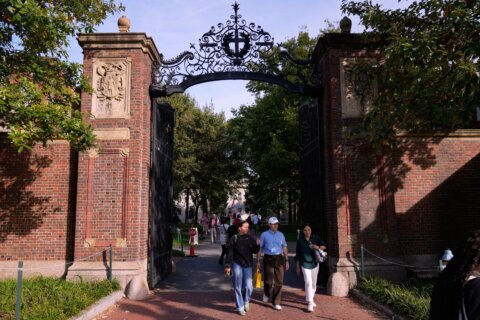Quality high schools can be found across the country, particularly in the suburbs.
To determine the 2021 Best High Schools, U.S. News reviewed nearly 24,000 public high schools in all 50 states and the District of Columbia for the 2018-19 school year and ranked 17,857 of those. Among the total ranked schools, 4,465 comprise the top 25% based on the ranking methodology, which looks at six factors including college readiness of students.
[Read: How U.S. News Calculated the 2021 Best High Schools Rankings.]
When looking at the schools in the top 25% of the rankings, a plurality — 1,997, or about 45% — are in the suburbs. By comparison, schools located in rural areas comprised 18% of schools in the top 25% of the rankings.
It isn’t location alone that sets schools apart in the rankings, but also the type of institution.
How Best High Schools Vary by Type
Traditional public schools make up the majority of the top 25%, with 3,551 schools represented, or 79.5% of the total group. Charter schools claim 11.2% of the top with 498 schools appearing. Magnet schools are close behind with 416 schools represented, or 9.3%.
While charter and magnet schools fared well — claiming seven of the top 10 spots in the overall national rankings — both educate a small number of students compared with traditional public schools. Of the more than 50 million elementary and secondary students in the 2018-19 school year, most were enrolled in traditional public schools, according to the National Center for Education Statistics. NCES data shows nearly 3.3 million of them were enrolled in charters and another 2.6 million in magnets for close to 6 million combined students between these two types of public schools.
While charter and magnet schools are publicly funded, both operate under models that break from traditional public schools.
[Read: Magnet Schools vs. Charter Schools: Differences Explained.]
Charter schools are typically independently operated, which allows flexibility over curriculum and exemptions from some state regulations. Magnets are subject to the oversight of district leadership but offer an alternative curriculum with a focus such as STEM — science, technology, engineering and mathematics — or fine arts, among other options. Both typically offer admission through a lottery system.
Race and Income of Students at the Best High Schools
Beyond location and school type, the Best High Schools also vary in demographic makeup.
Of the top 4,382 ranked public schools that reported numbers by race, 2,405 had minority enrollment that comprised less than a quarter of the student population. Only 1,034 schools had student populations where a majority were Black and Hispanic.
Additionally, 1,028 top schools — nearly 25% of the 4,182 that reported economic data — had student bodies where the majority received free or reduced-price lunch, a metric used to measure poverty. Demographics and poverty level data were unavailable for some schools in the top 25th percentile.
[See: Top 25 Best High Schools.]
Nationally, Black and Hispanic students lag behind their white classmates in standardized test scores. The same holds true for students from low-income families compared with their better-off peers. With that achievement gap in mind, the U.S. News rankings reward schools where Black, Hispanic and low-income students performed well on state assessments compared with students who are not considered underserved in the same state.
Beyond individual school rankings, other data available on the U.S. News website includes student-teacher ratio, student scores on state-mandated reading and math tests, and more. Families can also find schools by district within a selected state.
Choosing a High School
Quality schools are often a key consideration when families look to buy a house or move to a new neighborhood. For parents who are trying to choose a high school for their students, experts told U.S. News that there are multiple factors to consider. For instance, look for available academic offerings that can prepare students for college, such as dual enrollment, Advanced Placement classes or International Baccalaureate programs.
In addition, graduation rates — a key metric in the Best High Schools rankings — are also important to consider, experts say.
Access to technology and resources can be a selling point for families too, especially for students interested in certain activities or career paths. Parents may also want to ensure that the extracurricular activities that their child wishes to pursue are available.
And for parents looking at private schools, experts recommend crunching the numbers to see what that would mean for the family budget.
See the complete rankings of the Best High Schools.
More from U.S. News
U.S. News Releases 2021 Best High Schools Rankings
Map: See the Top 100 Public High Schools
10 Things to Consider When Picking Your Child’s High School
Where the Best Public High Schools Are Located originally appeared on usnews.com
Update 04/27/21: This article has been updated to reflect data from the 2021 U.S. News Best High Schools rankings.







